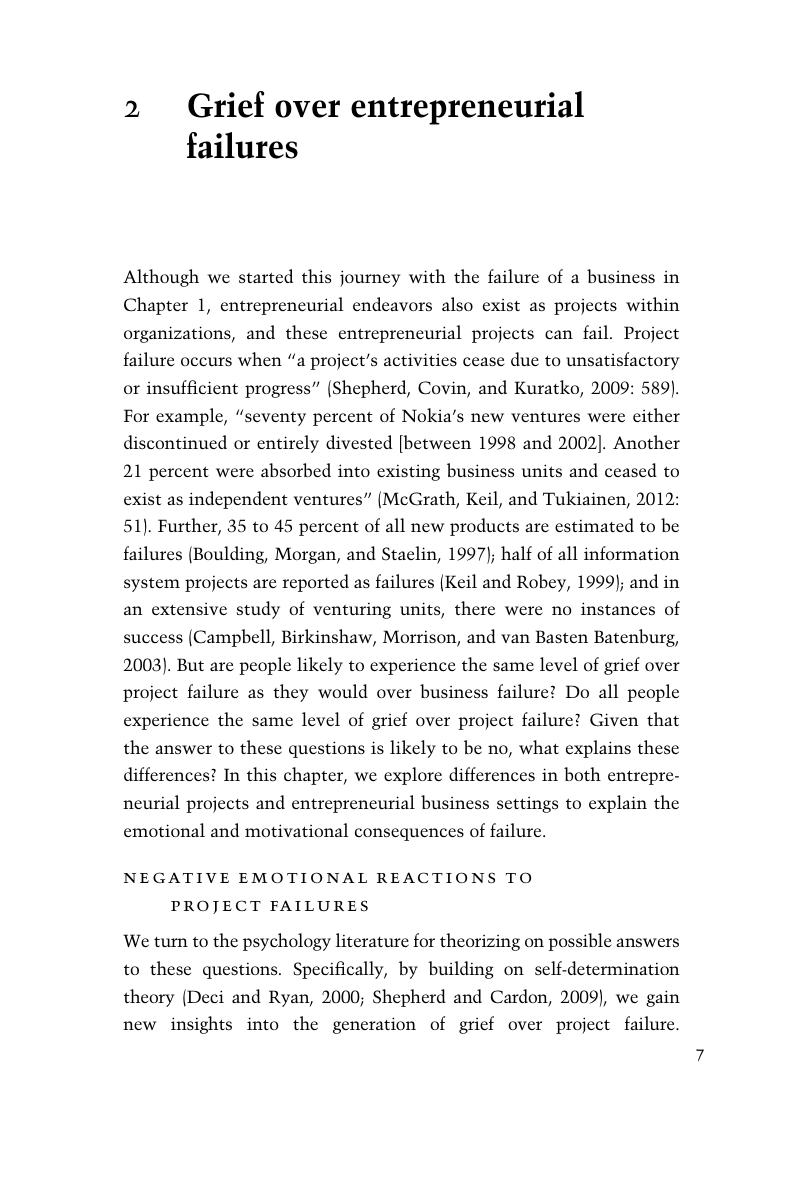Book contents
- Learning from Entrepreneurial Failure
- Learning from Entrepreneurial Failure
- Copyright page
- Dedication
- Contents
- Figures
- Book part
- 1 Introduction
- 2 Grief over entrepreneurial failures
- 3 Self-compassion and learning from failure*
- 4 Anticipatory grief, persistence, and recovery
- 5 Delaying project failure as creeping death
- 6 Emotional intelligence, emotional capability, and both grief recovery and sensemaking
- 7 Stigma over failure and impression management
- 8 Narratives of entrepreneurial failure
- 9 What can we do to learn more from our failure experiences?
- Index
- References
2 - Grief over entrepreneurial failures
Published online by Cambridge University Press: 05 March 2016
- Learning from Entrepreneurial Failure
- Learning from Entrepreneurial Failure
- Copyright page
- Dedication
- Contents
- Figures
- Book part
- 1 Introduction
- 2 Grief over entrepreneurial failures
- 3 Self-compassion and learning from failure*
- 4 Anticipatory grief, persistence, and recovery
- 5 Delaying project failure as creeping death
- 6 Emotional intelligence, emotional capability, and both grief recovery and sensemaking
- 7 Stigma over failure and impression management
- 8 Narratives of entrepreneurial failure
- 9 What can we do to learn more from our failure experiences?
- Index
- References
Summary

- Type
- Chapter
- Information
- Learning from Entrepreneurial FailureEmotions, Cognitions, and Actions, pp. 7 - 35Publisher: Cambridge University PressPrint publication year: 2016



